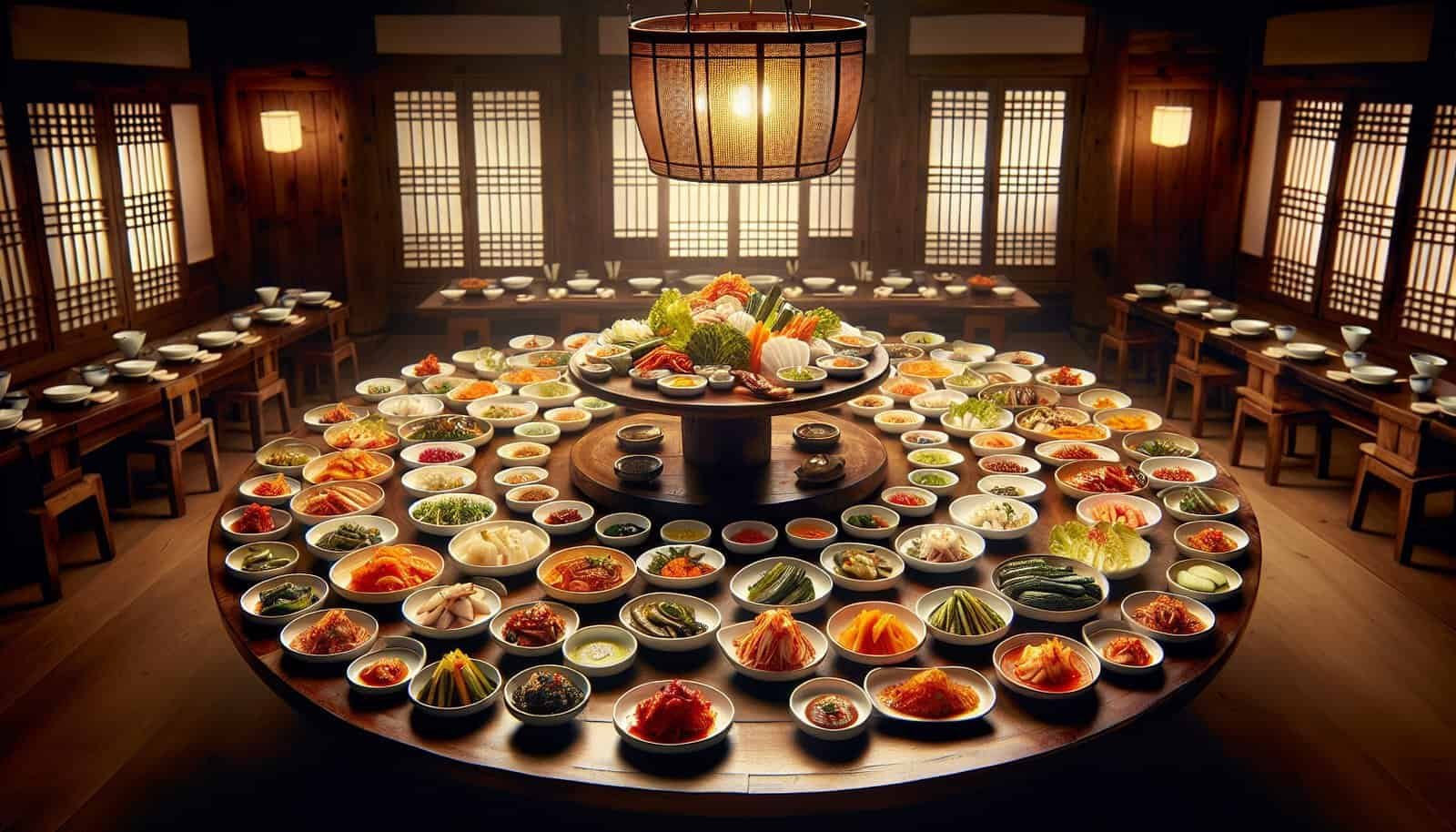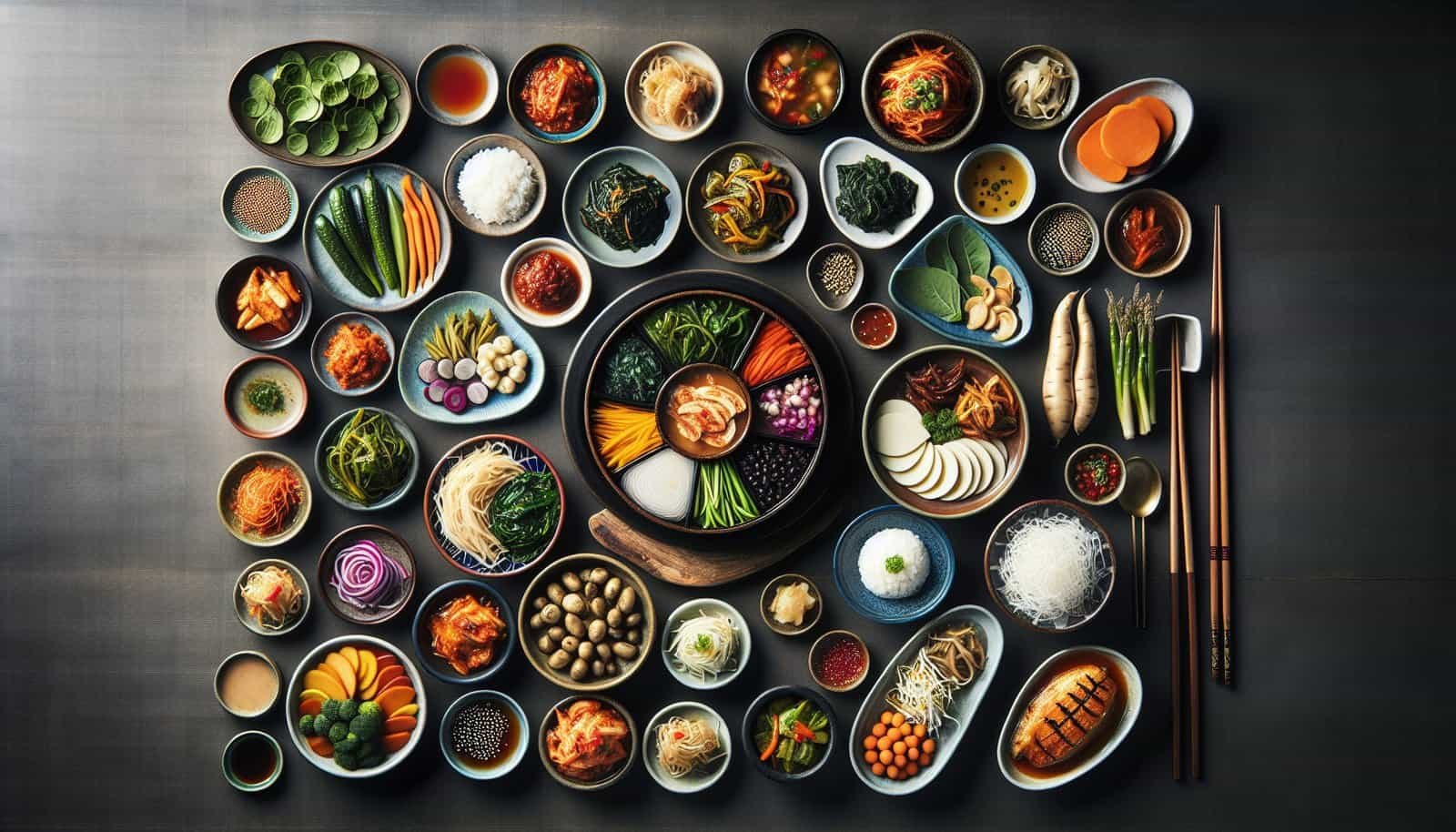In a Korean meal, traditional side dishes, known as banchan, hold a significant role in enhancing the overall dining experience. These small, flavorful dishes are served in generous portions alongside the main course, providing a myriad of tastes and textures that complement the main dish. From savory kimchi and soy-marinated vegetables to delicate seaweed and bean sprout salads, banchan not only add variety and depth to the meal but also represent the rich cultural heritage of Korean cuisine.
Introduction
In Korean cuisine, traditional side dishes, known as banchan, play a pivotal role in a meal. These delightful accompaniments not only add depth and variety to the dining experience but also enhance the flavors of the main dish. Banchan reflect the rich cultural heritage of Korea, with their unique flavors and textures. They not only contribute to the overall nutritional value of the meal but also hold significant cultural and social significance. From their humble beginnings to their evolution in modern times, banchan have become an essential part of Korean cuisine, representing its identity and heritage.
Definition of Traditional Side Dishes (Banchan)
Banchan refers to the assortment of small dishes that are served alongside the main course in Korean meals. These dishes are commonly shared among diners and are an integral part of the communal dining experience. Banchan can include a wide variety of dishes, ranging from kimchi (fermented vegetables) to namul (seasoned vegetables), jeon (pan-fried dishes), and much more. These side dishes are typically served in small portions, allowing diners to sample a multitude of flavors. The preparation and ingredients used in banchan vary greatly, showcasing the diversity of Korean cuisine.

Quantity and Variety of Banchan
Typical Number of Banchan
When dining at a Korean restaurant or enjoying a home-cooked Korean meal, you can expect to be greeted with a generous array of banchan. While there is no fixed number, a typical Korean meal can include anywhere from three to twelve different side dishes. The number of banchan often depends on the occasion, the restaurant, and the personal preferences of the chef. Regardless of the number, banchan always provide an exciting assortment of flavors and textures that complement the main dish.
Wide Range of Banchan
Korean cuisine offers an incredible range of banchan, with hundreds of different dishes to choose from. Some popular examples include kimchi (spicy fermented cabbage), japchae (sweet potato glass noodles), kongnamul (seasoned soybean sprouts), and bindaetteok (mung bean pancakes). Each banchan offers its own unique taste and nutritional profile, ensuring a balanced and fulfilling dining experience. With such a wide variety available, there is always something to suit everyone’s palate.
Complementary Nature of Banchan
Balancing Flavors and Textures
One of the key roles of banchan is to balance the flavors and textures of the main dish. Banchan are carefully prepared to provide contrasting tastes, ranging from spicy and savory to sweet and tangy. They also offer a variety of textures, from crispy and crunchy to soft and chewy. This careful balance ensures that each bite is a harmonious blend of flavors and textures, enhancing the overall enjoyment of the meal.
Enhancing the Main Dish
Banchan not only complement the main dish but also elevate its flavors. The side dishes are often designed to be enjoyed alongside specific main courses, creating a harmonious and complete dining experience. For example, the spicy and acidic flavors of kimchi can cut through the richness of grilled meats, while the fresh and light namul can provide a refreshing contrast to hearty stews. The combination of banchan and the main dish creates a symphony of flavors that tantalize the taste buds.

Nutritional Contribution of Banchan
Source of Essential Vitamins and Minerals
Banchan are not only delicious but also offer a wide range of essential vitamins and minerals. The use of various vegetables, herbs, and fermented ingredients in banchan ensures a nutrient-rich addition to the meal. For example, kimchi, a staple banchan, is a probiotic powerhouse that provides gut-friendly bacteria and is a great source of vitamins A and C. Other banchan, such as stir-fried spinach and seasoned mushrooms, offer a multitude of micronutrients that contribute to overall health and well-being.
Increase in Dietary Fiber
Many banchan dishes are packed with dietary fiber, which plays a crucial role in maintaining a healthy digestive system. Fiber-rich banchan, such as soybean sprouts and seaweed salads, help promote regular bowel movements and aid in digestion. By incorporating banchan into their meals, Koreans enjoy a diet that is not only flavorful but also beneficial for their overall health.
Cultural Significance of Banchan
Sharing and Socializing
Banchan holds a significant cultural role in Korean society, as it encourages sharing and socializing during meals. The communal aspect of Korean dining is exemplified by the practice of sharing banchan among diners. People gather around the table, sampling various dishes, and engaging in lively conversations. This dining style fosters a sense of community and togetherness, making each meal a special occasion for bonding with family and friends.
Honoring Ancestral Traditions
Banchan also carries a deep-rooted connection to Korean ancestral traditions. Many banchan recipes have been passed down through generations, preserving the culinary heritage of Korea. Families often have their own unique banchan recipes, handed down from their ancestors. By preparing and serving banchan, Koreans honor their cultural lineage and maintain a sense of pride in their heritage.

Impact on Korean Dining Etiquette
Serving Banchan with Respect
In Korean dining etiquette, serving banchan is considered an act of respect and hospitality. The host or the eldest person at the table takes the responsibility of serving the banchan, ensuring that everyone has enough to enjoy. By fulfilling this role, they demonstrate their care and consideration towards the guests, making them feel valued and cherished. This tradition highlights the importance of both food and relationships in Korean culture.
Proper Etiquette While Eating Banchan
Proper etiquette is observed while enjoying banchan. It is customary to use chopsticks or spoons to pick up the side dishes rather than using one’s hands. Additionally, it is polite to take smaller portions of each banchan to allow others to enjoy a variety of dishes. It is considered impolite to leave any leftovers, as it may imply dissatisfaction with the food. By adhering to these etiquettes, Koreans show their appreciation for the effort put into preparing the banchan.
Banchan as a Symbol of Korean Identity
Connection to Korean History and Culture
Banchan symbolizes the deep connection between Korean food and its history and culture. Many banchan recipes have been passed down for centuries, with some dating back to the dynastic era. The flavors and techniques used in banchan have evolved over time, reflecting the influences of different rulers, geographical regions, and cultural traditions. By preserving and celebrating these traditional dishes, Koreans honor their heritage and showcase their distinctive culinary identity.
Recognized as a Unique Korean Culinary Tradition
Korean banchan has gained recognition worldwide as a unique culinary tradition. The meticulous preparation, diverse flavors, and captivating presentation of banchan have captured the imaginations of food enthusiasts around the globe. Korean restaurants abroad often offer an assortment of banchan, allowing diners to experience the true essence of Korean cuisine. This recognition reinforces the importance of banchan as a cultural treasure that showcases the richness and complexity of Korean gastronomy.

Evolution of Banchan in Modern Times
Fusion of Traditional and Modern Flavors
In modern times, banchan has adapted to the changing tastes and preferences of Koreans. While traditional banchan dishes remain beloved, there has been an influx of fusion banchan that incorporates modern flavors and ingredients. Chefs experiment with global influences, blending Korean ingredients with international spices and techniques. This fusion of traditional and modern flavors adds a dynamic twist to banchan and keeps the culinary tradition evolving with the times.
Incorporation of International Ingredients
Globalization has also influenced the ingredients used in banchan. Korean chefs now have access to a wide range of international ingredients, allowing them to create innovative banchan dishes. For example, banchan may feature ingredients such as avocados, quinoa, or even Italian herbs, alongside traditional Korean staples. This incorporation of international ingredients reflects the open-mindedness of Korean cuisine and its ability to constantly adapt and embrace culinary trends from around the world.
Role of Banchan in Korean Cuisine Today
Customizable to Individual Preferences
One of the remarkable aspects of banchan is its adaptability to individual preferences. Diners can choose from an assortment of banchan dishes based on their taste preferences and dietary restrictions. Whether someone prefers spicy, vegetarian, or gluten-free options, there are banchan dishes available to cater to diverse palates. This customizability ensures that every diner can create a personalized and satisfying dining experience.
Reflecting Seasonality and Availability
Banchan also reflects the seasonality and availability of ingredients. Koreans have a strong appreciation for fresh, local produce, and this is reflected in the variety of banchan dishes offered throughout the year. For example, in the spring, banchan may feature fresh greens and edible flowers, while in the autumn, there may be an abundance of pumpkin and root vegetables. By embracing the ingredients of each season, banchan celebrates the natural flavors and diversity of Korean cuisine.
In conclusion, traditional side dishes, or banchan, are an integral part of Korean meals. They provide a wide variety of flavors, textures, and nutrients, enhancing the overall dining experience. Banchan also hold cultural significance, representing Korean traditions and fostering communal dining. From their historical roots to their modern adaptations, banchan have become a symbol of Korean identity and a testament to the rich culinary heritage of Korea. So next time you enjoy a Korean meal, take a moment to appreciate the vibrant array of banchan that accompanies it, and savor the taste of this unique culinary tradition.

